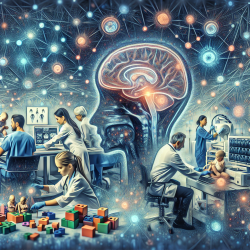Introduction
In the realm of pediatric healthcare, the early and accurate diagnosis of conditions such as sagittal craniosynostosis (CSO) is crucial for ensuring optimal developmental outcomes. Sagittal CSO, a condition where the sagittal suture of a child's skull fuses prematurely, affects approximately 1 in 2,000 births. This condition can lead to significant neurological complications if not addressed promptly. A recent study, "Automated Sagittal Craniosynostosis Classification from CT Images Using Transfer Learning," provides a novel approach to improving diagnostic accuracy using deep learning techniques.
Research Overview
The study introduces a deep learning-based method to classify subtypes of sagittal CSO from CT images. By leveraging transfer learning, the researchers aimed to enhance feature extraction efficiency and classification accuracy, surpassing traditional hand-crafted feature-based methods. This approach utilized a Hounsfield Unit (HU) threshold-based method to segment 3D skulls from CT slices, projecting them into a 2D space for further analysis.
Key Findings
- Deep learning models achieved over 90% prediction accuracy, a significant improvement over the previous 72% accuracy of hand-crafted methods.
- The model based on the senior surgeon's classification achieved the highest performance accuracy (75%) on unseen real data.
- Data augmentation and transfer learning were pivotal in overcoming data scarcity, enhancing the model's robustness.
Implications for Practitioners
For practitioners in speech language pathology and related fields, integrating these advanced methodologies into clinical practice could revolutionize the diagnostic process for sagittal CSO. The use of deep learning not only improves diagnostic accuracy but also reduces inter-observer variability, providing a more consistent basis for treatment decisions.
Practitioners are encouraged to consider the following steps:
- Explore and understand the potential of deep learning in medical imaging to enhance diagnostic accuracy.
- Engage in collaborative research to contribute to the growing dataset necessary for refining these models.
- Consider the integration of automated classification systems into routine diagnostic protocols to support clinical decision-making.
Conclusion
The application of deep learning in medical imaging, particularly in the classification of sagittal CSO, presents a promising avenue for improving pediatric outcomes. By adopting data-driven methodologies, practitioners can enhance their diagnostic capabilities, ultimately contributing to better health outcomes for children.
To read the original research paper, please follow this link: Automated Sagittal Craniosynostosis Classification from CT Images Using Transfer Learning.










